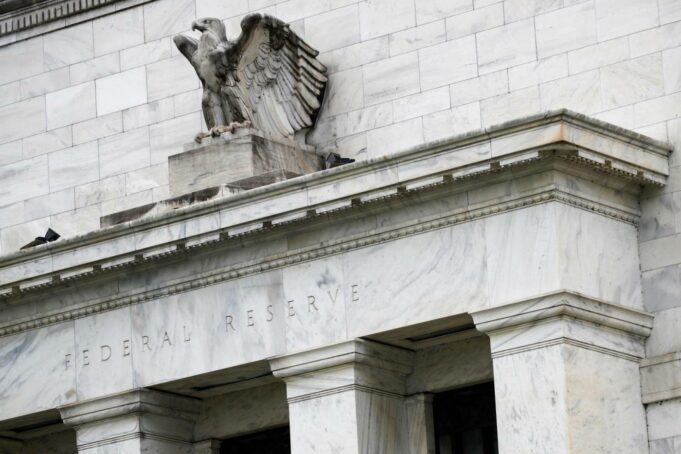Buzz: Federal Reserve researchers, in their latest summary of residential real estate activity in Western states, seemed to offer a vague warning when they eliminated several superlatives found in previous writings.
Source: The central bank’s “Beige Book” summarizes regional economic conditions across the nation eight times a year. We’re focused on the housing slice of the report from the Fed’s San Francisco unit, which oversees banking activities in nine Western states including California plus Alaska, Arizona, Hawaii, Idaho, Nevada, Oregon, Utah and Washington.
The Trend
Here are the San Francisco Fed’s July thoughts on residential real estate:
“Activity eased over the reporting period. Supply chain disruptions and rising labor and material costs continued to put upward pressure on housing prices. Sharp increases in mortgage rates, combined with high home prices, cooled down demand for existing and new single-family homes.
“Many contacts highlighted a decline in the number of offers sellers received. Inventories remained strained by historical standards despite an increase in the number of houses available for sale in some regions.
“Homebuilder confidence declined further, and permit issuance weakened in most of the District. One developer in Alaska reported a considerable decline in speculative construction of housing units and a low supply of seasonal housing. Reports mentioned increasing rents and declining availability of multi-family housing units.”
The dissection
Understanding Fed thinking often requires serious wordsmithing, not a business degree.
Back in September, the Beige Book said Western housing “activity edged down somewhat. Delta variant and rapid home price increases led some potential buyers to delay their purchases.”
“Despite drop in lumber prices, homebuilders continued reporting delays in construction due to shortages of labor and other raw materials. Growth in home prices slowed down a bit. Order backlogs remained high, as did new permit issuances. Demand for multifamily homes increased further.”
Then in October’s summary, the Fed’s view of market performance changed:
“Activity expanded at a brisk pace. Demand for housing was strong. Lack of affordable single-family housing is further increasing the demand for multifamily houses, with several contacts observing growth in new construction to meet current demand. House prices continued to increase across the region.”
Instead of using my trusty spreadsheet to parse a report, this analysis required a thesaurus. I noted that the next five market summaries also contained at least one of three superlatives — “brisk,” “strong” or “robust” — to describe upbeat conditions, though rising mortgage rates were cited as a drag on housing.
And the pattern continued …
December: “Activity continued to increase at a brisk pace. Demand for housing was strong, although declining affordability reportedly pushed some potential buyers into the multifamily market. Construction activity remained robust. However, labor and material shortages hampered the pace somewhat. Building permit issuance remained solid, while the inventory of existing homes remained low.”
January 2022: “Activity continued to increase, although at a slightly slower pace. Construction and sales remained strong. However, the pace of home price increases has slightly decelerated, and brokers in California mentioned that homes were taking a bit longer to sell. In addition, supply chain challenges and labor shortages continued to hamper new construction.”
March: “Activity increased robustly. Construction and sales remained strong. Nonetheless, ongoing shortages for material, workers, and land, as well as increased costs for lumber in particular, continued to delay projects. Home price increases remained elevated but decelerated slightly. Inventories remained tight. Higher rents for multifamily units in major metropolitan areas.”
April: “Demand remained strong. Nonetheless, some contacts expect a slowdown in demand due to increasing rates. Widespread price surges are not limited to house sales, but also include rentals. Supply chain disruptions caused uncertainty in material costs. Severe housing shortage, especially in California and Alaska.”
June: “Activity remained robust overall despite some signs of easing. Demand for homes, while still strong, has slowed down somewhat. Higher prices, rising rates, and low inventories thwarted some potential buyers, especially at the entry level. Supply chain disruptions and rising labor and construction costs contributed to increases. Rental markets continued strong, with increases in rents and low vacancy rates.”
In the July Beige Book, those superlatives I noted were nowhere to be found.
How bubbly?
On a scale of zero bubbles (no bubble here) to five bubbles (five-alarm warning) … FOUR BUBBLES!
It’s good to know the Fed is aware of its own powers when it comes to the chill created by hikes in interest rates — as 30-year rates roughly doubled in a year-and-a-half to 5.5%.
However, will the central bank continue to do all it can to cure the nation’s surging cost-of-living increases — now running at 40-year highs — knowing that the higher rates needed to cool inflation could turn housing from “robust” to “sickly”?
Jonathan Lansner is the business columnist for the Southern California News Group. He can be reached at jlansner@scng.com











